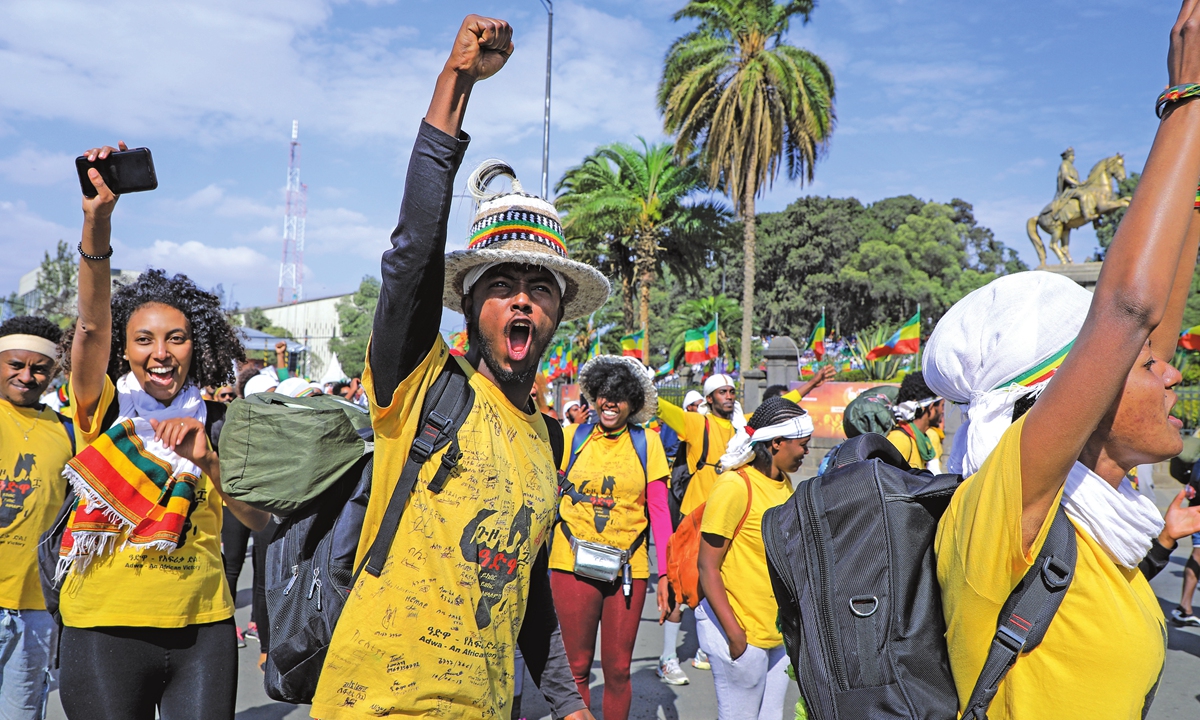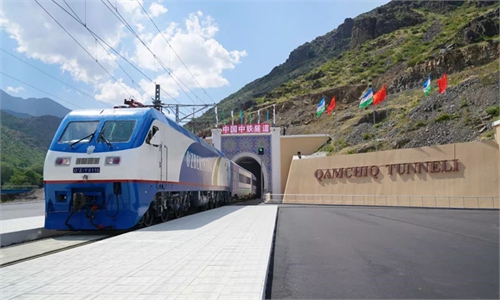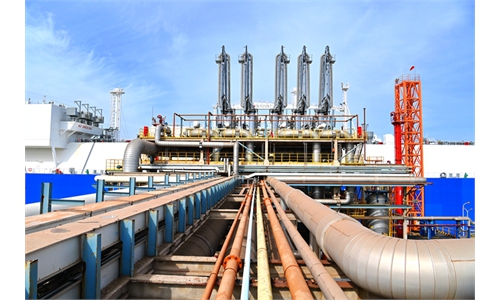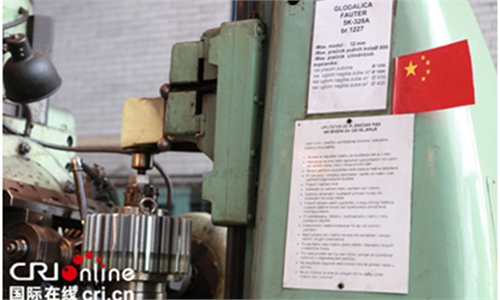

Ethiopians celebrate Adwa Victory Day, in the capital Addis Ababa, Ethiopia on March 2, 2021. Photo: VCG
Energy cooperation under the Belt and Road Initiative (BRI) has enabled Ethiopia, which is rich in renewable energy reserves, to complete power transmission lines connecting Djibouti and Sudan, paving way for regional electricity connectivity in addition to exportation, energy cooperation and common development, Ethiopian Ambassador to China Teshome Toga Chanaka has said.
In partnership with Chinese power companies, the country has successfully completed the power lines linking neighboring countries which have a need for electricity, Teshome told the Global Times on Tuesday at the second Belt and Road Energy Ministerial Conference held in Qingdao, East China's Shandong Province.
"In addition, Ethiopia has also signed an agreement with Kenya and other countries for electricity exports," Teshome said. "It's not because we are already self-sufficient on energy, but because sharing what we have with our neighbors is very important for regional integration.
Known as an economic engine of Africa and emphasizing a shift toward renewable energy sources over recent years, Ethiopia has stepped up cooperation with China in undertaking massive projects, including constructing a high voltage electric transmission line to 6,450 megawatts hydro dam currently under construction on Blue Nile river, the 51 megawatts Adama I and 153 megawatts Adama II wind farm projects and the 300 megawatts Tekeze hydro project.
The Ambassador said the construction of the Grand Ethiopian Renaissance dam hydropower is almost 80 percent completed, providing new hope for Ethiopian power exports.
The Adama project is China's first overseas wind power engineering procurement construction project and the first new-energy project abroad backed by Chinese government concessional loans.
"We have a huge energy source in Ethiopia. Most of that is renewable energy sources, including wind, solar, hydro and geothermal," the Ambassador said. "And Ethiopia strongly believes in regional integration and regional cooperation, because we are destined to live together."
Energy cooperation, accounts for about 40 percent of Chinese BRI investment, has been growing quickly.
Countries, including Cuba and Morocco, have become the latest members of the Belt and Road energy partnership, according to the National Energy Administration on Monday. The inclusive and newly expanded partnership network now has 32 members and aims to promote energy cooperation throughout BRI markets as countries pursue a low-carbon economic transition.
Renewable energy sources are fasting developing around the world, a report released on Tuesday by the China Electric Power Planning & Engineering Institute showed that installed capacity from renewable sources will accounted for around half of all energy generation installations in Southeast Asia by 2030.


Ethiopians celebrate Adwa Victory Day, in the capital Addis Ababa, Ethiopia on March 2, 2021. Photo: VCG
Energy cooperation under the Belt and Road Initiative (BRI) has enabled Ethiopia, which is rich in renewable energy reserves, to complete power transmission lines connecting Djibouti and Sudan, paving way for regional electricity connectivity in addition to exportation, energy cooperation and common development, Ethiopian Ambassador to China Teshome Toga Chanaka has said.
In partnership with Chinese power companies, the country has successfully completed the power lines linking neighboring countries which have a need for electricity, Teshome told the Global Times on Tuesday at the second Belt and Road Energy Ministerial Conference held in Qingdao, East China's Shandong Province.
"In addition, Ethiopia has also signed an agreement with Kenya and other countries for electricity exports," Teshome said. "It's not because we are already self-sufficient on energy, but because sharing what we have with our neighbors is very important for regional integration.
Known as an economic engine of Africa and emphasizing a shift toward renewable energy sources over recent years, Ethiopia has stepped up cooperation with China in undertaking massive projects, including constructing a high voltage electric transmission line to 6,450 megawatts hydro dam currently under construction on Blue Nile river, the 51 megawatts Adama I and 153 megawatts Adama II wind farm projects and the 300 megawatts Tekeze hydro project.
The Ambassador said the construction of the Grand Ethiopian Renaissance dam hydropower is almost 80 percent completed, providing new hope for Ethiopian power exports.
The Adama project is China's first overseas wind power engineering procurement construction project and the first new-energy project abroad backed by Chinese government concessional loans.
"We have a huge energy source in Ethiopia. Most of that is renewable energy sources, including wind, solar, hydro and geothermal," the Ambassador said. "And Ethiopia strongly believes in regional integration and regional cooperation, because we are destined to live together."
Energy cooperation, accounts for about 40 percent of Chinese BRI investment, has been growing quickly.
Countries, including Cuba and Morocco, have become the latest members of the Belt and Road energy partnership, according to the National Energy Administration on Monday. The inclusive and newly expanded partnership network now has 32 members and aims to promote energy cooperation throughout BRI markets as countries pursue a low-carbon economic transition.
Renewable energy sources are fasting developing around the world, a report released on Tuesday by the China Electric Power Planning & Engineering Institute showed that installed capacity from renewable sources will accounted for around half of all energy generation installations in Southeast Asia by 2030.




